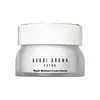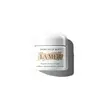What's inside
What's inside
 Key Ingredients
Key Ingredients

 Benefits
Benefits

 Concerns
Concerns

 Ingredients Side-by-side
Ingredients Side-by-side

Water
Skin ConditioningButyrospermum Parkii Butter
Skin ConditioningButylene Glycol
HumectantCaprylic/Capric/Myristic/Stearic Triglyceride
EmollientHydrogenated Polyisobutene
EmollientCetyl Alcohol
EmollientEthylhexyl Stearate
EmollientGlyceryl Stearate
EmollientPEG-40 Stearate
EmulsifyingGlycerin
HumectantOlea Europaea Fruit Extract
BleachingSalvia Sclarea Extract
AntiseborrhoeicRosmarinus Officinalis Leaf Oil
MaskingTriticum Vulgare Bran Extract
Skin ConditioningAnthemis Nobilis Flower Extract
MaskingPlankton Extract
Skin ConditioningBrassica Campestris Seed Oil
Skin ConditioningPelargonium Graveolens Flower Oil
MaskingCitrus Grandis Peel Oil
MaskingOenothera Biennis Oil
EmollientPersea Gratissima Oil
Skin ConditioningPrunus Armeniaca Kernel Oil
MaskingTriticum Vulgare Germ Oil
EmollientSimmondsia Chinensis Seed Oil
EmollientCitrus Aurantium Amara Peel Oil
Skin ConditioningVitis Vinifera Seed Oil
EmollientLimnanthes Alba Seed Oil
Skin ConditioningRosa Canina Fruit Oil
EmollientSesamum Indicum Seed Oil
EmollientOlea Europaea Fruit Oil
MaskingDimethicone
EmollientLinoleic Acid
CleansingCholesterol
EmollientAcetyl Glucosamine
Skin ConditioningSucrose
HumectantCaprylyl Glycol
EmollientHydroxyethyl Acrylate/Sodium Acryloyldimethyl Taurate Copolymer
Emulsion StabilisingPolybutene
Sodium Hyaluronate
HumectantCaffeine
Skin ConditioningAcetyl Hexapeptide-8
HumectantTocopheryl Acetate
AntioxidantSqualane
EmollientTetrahexyldecyl Ascorbate
AntioxidantHydrogenated Lecithin
EmulsifyingCarbomer
Emulsion StabilisingPolysorbate 60
EmulsifyingSodium Acrylate/Acrylonitrogens Copolymer
Skin ConditioningHexylene Glycol
EmulsifyingOleic/Linoleic/Linolenic Polyglycerides
EmollientTromethamine
BufferingLecithin
EmollientCitric Acid
BufferingDisodium EDTA
Citral
PerfumingLinalool
PerfumingGeraniol
PerfumingLimonene
PerfumingCitronellol
PerfumingBHT
AntioxidantPotassium Sorbate
PreservativePhenoxyethanol
PreservativeWater, Butyrospermum Parkii Butter, Butylene Glycol, Caprylic/Capric/Myristic/Stearic Triglyceride, Hydrogenated Polyisobutene, Cetyl Alcohol, Ethylhexyl Stearate, Glyceryl Stearate, PEG-40 Stearate, Glycerin, Olea Europaea Fruit Extract, Salvia Sclarea Extract, Rosmarinus Officinalis Leaf Oil, Triticum Vulgare Bran Extract, Anthemis Nobilis Flower Extract, Plankton Extract, Brassica Campestris Seed Oil, Pelargonium Graveolens Flower Oil, Citrus Grandis Peel Oil, Oenothera Biennis Oil, Persea Gratissima Oil, Prunus Armeniaca Kernel Oil, Triticum Vulgare Germ Oil, Simmondsia Chinensis Seed Oil, Citrus Aurantium Amara Peel Oil, Vitis Vinifera Seed Oil, Limnanthes Alba Seed Oil, Rosa Canina Fruit Oil, Sesamum Indicum Seed Oil, Olea Europaea Fruit Oil, Dimethicone, Linoleic Acid, Cholesterol, Acetyl Glucosamine, Sucrose, Caprylyl Glycol, Hydroxyethyl Acrylate/Sodium Acryloyldimethyl Taurate Copolymer, Polybutene, Sodium Hyaluronate, Caffeine, Acetyl Hexapeptide-8, Tocopheryl Acetate, Squalane, Tetrahexyldecyl Ascorbate, Hydrogenated Lecithin, Carbomer, Polysorbate 60, Sodium Acrylate/Acrylonitrogens Copolymer, Hexylene Glycol, Oleic/Linoleic/Linolenic Polyglycerides, Tromethamine, Lecithin, Citric Acid, Disodium EDTA, Citral, Linalool, Geraniol, Limonene, Citronellol, BHT, Potassium Sorbate, Phenoxyethanol
Algae Extract
EmollientParaffinum Liquidum
EmollientPetrolatum
EmollientGlycerin
HumectantIsohexadecane
EmollientMicrocrystalline Wax
Emulsion StabilisingLanolin Alcohol
EmollientCitrus Aurantifolia Peel Extract
CleansingSesamum Indicum Seed Oil
EmollientEucalyptus Globulus Leaf Oil
PerfumingSesamum Indicum Seed Powder
Skin ConditioningMedicago Sativa Seed Powder
Skin ConditioningHelianthus Annuus Seedcake
AbrasivePrunus Amygdalus Dulcis Seed Meal
AbrasiveSodium Gluconate
Skin ConditioningCopper Gluconate
Skin ConditioningCalcium Gluconate
HumectantMagnesium Gluconate
Skin ConditioningZinc Gluconate
Skin ConditioningMagnesium Sulfate
Paraffin
PerfumingTocopheryl Succinate
AntioxidantNiacin
SmoothingWater
Skin ConditioningBeta-Carotene
Skin ConditioningDecyl Oleate
EmollientAluminum Distearate
Emulsion StabilisingOctyldodecanol
EmollientCitric Acid
BufferingCyanocobalamin
Skin ConditioningMagnesium Stearate
Cosmetic ColorantPanthenol
Skin ConditioningZea Mays Oil
EmulsifyingLimonene
PerfumingGeraniol
PerfumingLinalool
PerfumingHydroxycitronellal
PerfumingCitronellol
PerfumingBenzyl Salicylate
PerfumingBenzyl Benzoate
AntimicrobialSodium Benzoate
MaskingAlcohol Denat.
AntimicrobialParfum
MaskingAlgae Extract, Paraffinum Liquidum, Petrolatum, Glycerin, Isohexadecane, Microcrystalline Wax, Lanolin Alcohol, Citrus Aurantifolia Peel Extract, Sesamum Indicum Seed Oil, Eucalyptus Globulus Leaf Oil, Sesamum Indicum Seed Powder, Medicago Sativa Seed Powder, Helianthus Annuus Seedcake, Prunus Amygdalus Dulcis Seed Meal, Sodium Gluconate, Copper Gluconate, Calcium Gluconate, Magnesium Gluconate, Zinc Gluconate, Magnesium Sulfate, Paraffin, Tocopheryl Succinate, Niacin, Water, Beta-Carotene, Decyl Oleate, Aluminum Distearate, Octyldodecanol, Citric Acid, Cyanocobalamin, Magnesium Stearate, Panthenol, Zea Mays Oil, Limonene, Geraniol, Linalool, Hydroxycitronellal, Citronellol, Benzyl Salicylate, Benzyl Benzoate, Sodium Benzoate, Alcohol Denat., Parfum
 Reviews
Reviews

Ingredients Explained
These ingredients are found in both products.
Ingredients higher up in an ingredient list are typically present in a larger amount.
Citric Acid is an alpha hydroxy acid (AHA) naturally found in citrus fruits like oranges, lemons, and limes.
Like other AHAs, citric acid can exfoliate skin by breaking down the bonds that hold dead skin cells together. This helps reveal smoother and brighter skin underneath.
However, this exfoliating effect only happens at high concentrations (20%) which can be hard to find in cosmetic products.
Due to this, citric acid is usually included in small amounts as a pH adjuster. This helps keep products slightly more acidic and compatible with skin's natural pH.
In skincare formulas, citric acid can:
While it can provide some skin benefits, research shows lactic acid and glycolic acid are generally more effective and less irritating exfoliants.
Most citric acid used in skincare today is made by fermenting sugars (usually from molasses). This synthetic version is identical to the natural citrus form but easier to stabilize and use in formulations.
Read more about some other popular AHA's here:
Learn more about Citric AcidCitronellol is used to add fragrance/parfum to a product. It is often derived from plants such as roses. In fact, it can be found in many essential oils including geranium, lavender, neroli, and more. The scent of Citronellol is often described as "fresh, grassy, and citrus-like".
Since the Citronellol molecule is already unstable, Citronellol becomes irritating on the skin when exposed to air.
Citronellol is a modified terpene. Terpenes are unsaturated hydrocarbons found in plants. They make up the primary part of essential oils.
Citronellol is not able to be absorbed into deeper layers of the skin. It has low permeability,
Citronellol is also a natural insect repellent.
Learn more about CitronellolGeraniol is used to add fragrance/parfum to a product. It is the main component of citronellol. It is a monoterpenoid and an alcohol.
Monoterpenes are naturally found in many parts of different plants.
Geraniol can be found in many essential oils including Rose Oil and Citronella Oil. The scent of Geraniol is often described as "rose-like". Many foods also contain Geraniol for fruit flavoring.
Geraniol can irritate the skin when exposed to air. However, irritation depends on the ability of geraniol to penetrate into the skin. In general, geraniol is not able to penetrate skin easily.
Geraniol is colorless and has low water-solubility. However, it is soluble in common organic solvents.
Like citronellol, it is a natural insect repellent.
2,6-Octadien-1-ol, 3,7-dimethyl-, (2E)-
Learn more about GeraniolGlycerin is already naturally found in your skin. It helps moisturize and protect your skin.
A study from 2016 found glycerin to be more effective as a humectant than AHAs and hyaluronic acid.
As a humectant, it helps the skin stay hydrated by pulling moisture to your skin. The low molecular weight of glycerin allows it to pull moisture into the deeper layers of your skin.
Hydrated skin improves your skin barrier; Your skin barrier helps protect against irritants and bacteria.
Glycerin has also been found to have antimicrobial and antiviral properties. Due to these properties, glycerin is often used in wound and burn treatments.
In cosmetics, glycerin is usually derived from plants such as soybean or palm. However, it can also be sourced from animals, such as tallow or animal fat.
This ingredient is organic, colorless, odorless, and non-toxic.
Glycerin is the name for this ingredient in American English. British English uses Glycerol/Glycerine.
Learn more about GlycerinLimonene is a fragrance that adds scent and taste to a formulation.
It's found in the peel oil of citrus fruits and other plants such as lavender and eucalyptus. The scent of limonene is generally described as "sweet citrus".
Limonene acts as an antioxidant, meaning it helps neutralize free radicals.
When exposed to air, oxidized limonene may sensitize the skin. Because of this, limonene is often avoided by people with sensitive skin.
The term 'fragrance' is not regulated in many countries. In many cases, it is up to the brand to define this term. For instance, many brands choose to label themselves as "fragrance-free" because they are not using synthetic fragrances. However, their products may still contain ingredients such as essential oils that are considered a fragrance.
Learn more about LimoneneLinalool is a fragrance and helps add scent to products. It's derived from common plants such as cinnamon, mint, citrus, and lavender.
Like Limonene, this ingredient oxidizes when exposed to air. Oxidized linalool can cause allergies and skin sensitivity.
This ingredient has a scent that is floral, spicy tropical, and citrus-like.
Learn more about LinaloolSesame oil comes from sesame seeds. Sesame oil is rich in fatty acids and Vitamin E.
It has antibacterial, antioxidant, and anti-inflammatory properties. The phenolic compounds of this ingredient (including vitamin E) give it these properties.
Unrefined sesame oil has a comedogenic rating of 3, while refined sesame oil has a rating of 1. This ingredient may not be fungal-acne safe.
The fatty acids in sesame oil include linoleic acid (41%), oleic acid (39%), palmitic acid (8%), stearic acid (5%), and some small traces of others.
Learn more about Sesamum Indicum Seed OilWater. It's the most common cosmetic ingredient of all. You'll usually see it at the top of ingredient lists, meaning that it makes up the largest part of the product.
So why is it so popular? Water most often acts as a solvent - this means that it helps dissolve other ingredients into the formulation.
You'll also recognize water as that liquid we all need to stay alive. If you see this, drink a glass of water. Stay hydrated!
Learn more about Water